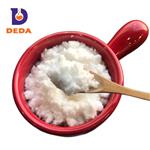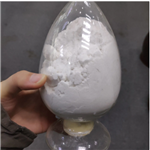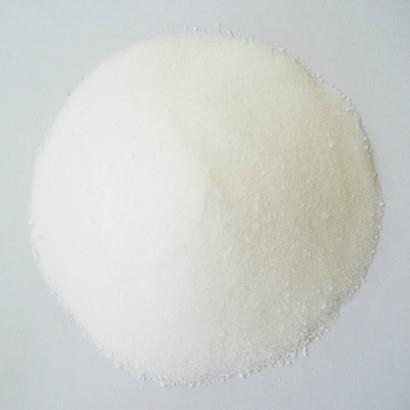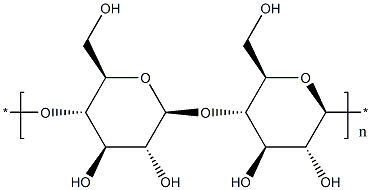Application of Microcrystalline cellulose
Mar 7,2022
General description
Microcrystalline cellulose (MCC) is mainly composed of β- 1,4-glucoside bonded linear polysaccharide [1] is a white, odorless and tasteless crystalline powder composed of free flowing short rod or powder porous particles of natural cellulose hydrolyzed to the ultimate degree of polymerization (LODP) by dilute acid. Microcrystalline cellulose is a colorless, odorless gas. It is easily ignited. Once ignited it burns with a pale blue, almost invisible flame. The vapors are lighter than air. It is flammable over a wide range of vapor/air concentrations. Microcrystalline cellulose is not toxic but is a simple asphyxiate by the displacement of oxygen in the air. Under prolonged exposure to fire or intense heat the containers may rupture violently and rocket. Microcrystalline cellulose is used to make other chemicals and in oxyhydrogen welding and cutting. The particle size is generally 20 ~ 80 μ m. The ultimate degree of polymerization (LODP) is 15 ~ 375, which has no fiber and strong fluidity. [3] It is insoluble in water, dilute acid, organic solvent and oil, partially dissolved and moistened in dilute alkali solution, and has high reaction performance in the process of carboxymethylation, acetylation and esterification.
Chemical and Physical property
Microcrystalline cellulose has three basic characteristics: (1) the average degree of polymerization reaches the limit degree of polymerization. (2) It has the lattice characteristics of cellulose I (in the cell: the center and the quadrangular chain are arranged in parallel in the same direction), and the crystallinity is higher than that of protocellulose. (3) strong absorbency and ability to generate gel after strong shearing in water medium. Generally speaking, hydrolyzed cellulose is the general name of various mixed products of degraded cellulose, while microcrystalline cellulose is limited to hydrolyzed cellulose with the above three characteristics. This feature is the only standard to measure and test whether it is microcrystalline cellulose, and it is also the main standard to distinguish microcrystalline cellulose from hydrolyzed cellulose. It indicates that there are many physical and chemical indexes of the properties of microcrystalline cellulose, such as crystallinity, polymerization degree, crystalline form, water absorption value, wetting heat, bulk density, particle size, specific surface area, fluidity, reactivity, gel property, chemical composition, etc[1,2].
Application
Microcrystalline cellulose is widely used in medicine, food, cosmetics and other industries because of its special properties such as low degree of polymerization and large specific surface area. In view of the unique structure and properties of microcrystalline cellulose, it is widely used in medical and health, food and beverage, light chemical industry and other national economic departments as disintegrating agent and stabilizing emulsifier. Because cellulose widely exists in nature, hundreds of billions of tons of cellulose rich biomass residues can be produced in the world every year. If these residues are well transformed and utilized, they will be a rich resource. In China, the demand for microcrystalline cellulose is increasing year by year with the expansion of production scale and the improvement of product grade in tanning, daily chemical, medicine, food and chlor alkali industries. Therefore, microcrystalline cellulose has broad market prospects. In foreign countries, microcrystalline cellulose has been listed in the FDA's evaluation of food additive safety index (GRAS). It is allowed to be used as a food additive in Europe, which is contained in the FDA's Guide to inactive ingredients, and it is allowed to be used in non injectable preparations in the UK.
Figure 1 the application of Microcrystalline cellulose [3]
1.Microcrystalline cellulose is often used as adsorbent, suspending agent, diluent and disintegrating agent. Microcrystalline cellulose is widely used in pharmaceutical preparations. It is mainly used as diluent and adhesive in oral tablets and capsules. It can be used not only for wet granulation, but also for dry direct tablet pressing. It also has certain lubrication and disintegration, which is very useful in tablet preparation. The sudden interest on MCC and MCC-based materials as adsorbents cannot be separated from their excellent properties such as renewability, biodegradability,biocompatibility, economic value, non-toxicity, high mechanical properties and surface area. Upon comparison with established adsorbents reported from literature, MCC-based materials performed excellently well in the adsorption of dyes and heavy metals with Langmuir isotherm and pseudo-second order reported mostly as the best fit models for the generated equilibrium and kinetic data, respectively pointing at the distribution of adsorption sites to be homogeneous as well as the formation of monolayer adsorbate on their surface[4].
2.Mesoporous molecular sieve (sba-16-ncc) was prepared with nano cellulose (NCC) as auxiliary template. Ni / sba-16-ncc mesoporous hydrodearomatization catalyst was prepared after loading metal nickel. The catalysts were characterized by X-ray powder diffraction (XRD), N2 adsorption desorption, Fourier transform infrared spectroscopy (FTIR), scanning electron microscopy (SEM), temperature programmed reduction (H2-TPR) and X-ray photoelectron spectroscopy (XPS). The results show that compared with Ni / SBA-16, Ni / sba-16-ncc has higher mesoporous order and specific surface area, larger mesoporous pore size and residual organic functional groups on the surface, which are conducive to the diffusion of reaction molecules and the dispersion and reduction of active components. Under the same reaction conditions, the catalyst activity is increased by about 40% and the selectivity of decalin is increased by about 50%. In the presence of sulfide, the activity and selectivity of Ni / sba-16-ncc are also significantly higher than Ni / SBA-16, the naphthalene conversion rate is 76%, and the selectivity of decalin is close to 70%.
Synthesis
At present, the production of microcrystalline cellulose at home and abroad takes natural cellulose as raw materials, mainly including cotton linter, rice husk, pine needle, hemp stalk, Indian bamboo, orange peel and jute. Microcrystalline cellulose is mainly prepared by acid hydrolysis. Although the raw materials are different and the product properties are different, its main preparation principles and methods are the same, that is, cellulose purification, acid hydrolysis, washing, drying, crushing and other processes. The particle size and distribution of microcrystalline cellulose depend on the structure of raw materials, acid concentration, temperature, time, hydrolysis process and mechanical treatment degree.
Storage and Safety
This product is widely used in oral preparations and foods. It is relatively non-toxic and non irritating. It is not absorbed orally and has almost no potential toxicity. A large amount of use can cause mild diarrhea, which is not harmful as an adjuvant of pharmaceutical preparations. Misuse of cellulose containing preparations, such as inhalation or injection, can lead to cellulose granuloma. In addition, microcrystalline cellulose is also prepared by microbial fermentation, that is, enzymatic hydrolysis. This product is a hygroscopic and stable substance. Mass storage should be in a cool and dry closed container.
Reference
1.Zhu moshuqi, Luo Wei, Lin Chunxiang: research status and development trend of microcrystalline cellulose, East China paper, 2016, issue 03, pages 6-9.
2. Research progress of microcrystalline cellulose.
3.Thoorens G., Krier F. & Leclercq B. et al., "Microcrystalline cellulose, a direct compression binder in a quality by design environment—A review," International Journal of Pharmaceutics, Vol.473, No.1-2(2014), pp.64-72.
4.Li Jian, he Sida, Chu Shuang, etc.: nano microcrystalline cellulose assisted synthesis of hydrodearomatization catalyst, Journal of chemical engineering of colleges and universities, No. 04, 2021, pp. 675-682.
- Related articles
- Related Qustion
- Discover Multifunctional Hydroxypropyl Methylcellulose (HPMC) Mar 7, 2024
Hydroxypropyl methylcellulose (HPMC) is a remarkable compound, manifesting in a white or off-white powder form.
- What Can Modified Cellulose Be Used For? Feb 29, 2024
The term "modified cellulose" pertains to chemical modifications primarily aimed at the hydroxyl groups within the cellulose backbone. This article will introduce its applications.
Rhodiola rosea (R. rosea) belongs to the plant family of Crassulaceae and grows primarily in high altitudes in the mountainous arctic areas of Tibet, Russia, China, and India.....
Mar 6,2022Plant extractsFor many manufacturers of undried or semidry sausages, Glucono-delta-Lactone(GdL) is the preferred acidulant. It is applied as a crystalline powder that is freely soluble in water, where it hydrolyzes to gluconic acid within a few hours and....
Mar 7,2022Biochemical EngineeringMicrocrystalline cellulose
9004-34-6You may like
- Potassium carbonate: a food additive
Apr 15, 2024
- Can Ammonium bicarbonate be used as a food additive?
Apr 9, 2024
- How to Melt Coconut Oil at Home?
Mar 21, 2024
Microcrystalline cellulose manufacturers
- Microcrystalline cellulose
-

- $0.00 / 1kg
- 2024-04-29
- CAS:9004-34-6
- Min. Order: 1kg
- Purity: 99%
- Supply Ability: 500
- Microcrystalline cellulose
-

- $5.00 / 1kg
- 2024-04-29
- CAS:9004-34-6
- Min. Order: 1kg
- Purity: 99.5
- Supply Ability: 10 ton per month
- Microcrystalline cellulose
-

- $4.80 / 1kg
- 2024-04-29
- CAS:9004-34-6
- Min. Order: 1kg
- Purity: 99%
- Supply Ability: 300tons





